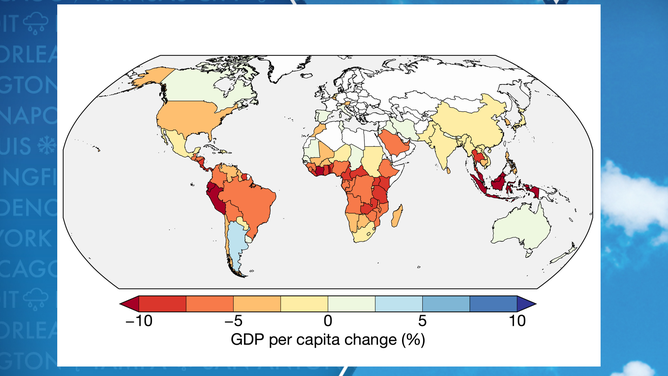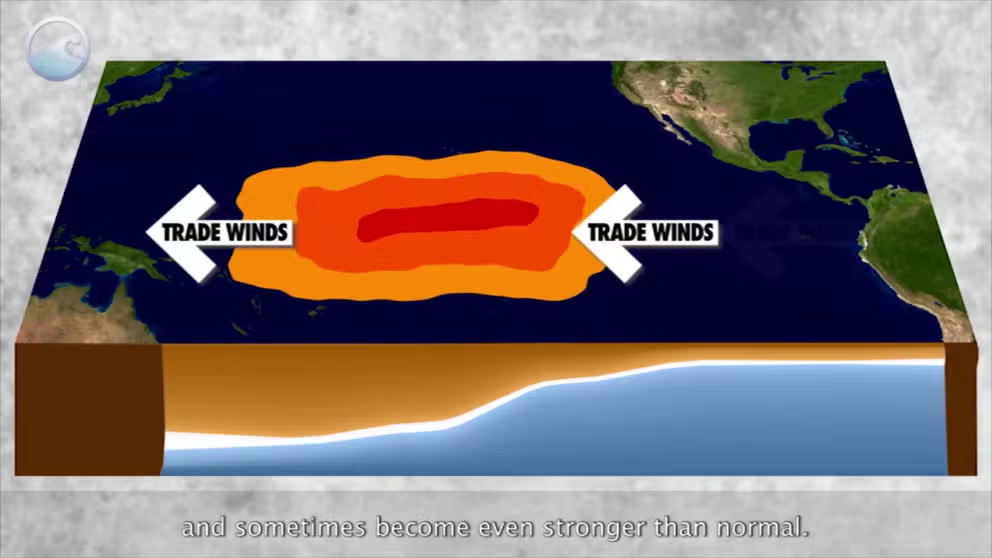El Nino’s financial toll could cost trillions and persist for years, study warns
The last El Niño occurred in 2018-2019, and the event takes place when water temperatures in the central and eastern Pacific reach at least 0.5 degrees Celsius above average.
Potential development of El Nino could create a below-average hurricane season this year
FOX Weather Hurricane Specialist Bryan Norcross spoke with Research Scientist at Colorado State University Phil Klotzbach about the thought process into their latest 2023 hurricane outlook.
HANOVER, NH – The financial hardships of an El Niño climate pattern can last several years with trillions lost in economic income, a first of its type of study by Dartmouth researchers warns.
The findings recently published in the journal Science evaluated the long-term costs of El Niño and projected greater losses than initially thought.
According to the study, researchers analyzed the 1982-83 and 1997-98 events that sent water temperatures to record levels in the Pacific Ocean and determined that the global economy suffered losses of $4.1 trillion and $5.7 trillion, respectively.
TRANSITION INTO EL NINO COULD LEAD TO RECORD HEAT AROUND GLOBE
"We can say with certainty that societies and economies absolutely do not just take a hit and recover," said Christopher Callahan, lead author and a geography doctoral candidate at Dartmouth. "The aggregate price tag on these events has not ever been fully quantified—you have to add up all the depressed growth moving forward, not just when the event is happening."
Even though a typical El Niño lasts 9 -12 months, societal impacts from floods, crop failures, declining fish populations and an increase in tropical diseases can last a decade or more.
"The duration and magnitude of the financial repercussions we uncovered suggests to me that we are maladapted to the climate we have," Callahan stated.
WHAT ARE EL NINO AND LA NINA CLIMATE PATTERNS?

The map indicates the percentage shift in GDP as a result of the 1997-98 El Niño.
(Chris Callahan/Dartmouth College / FOX Weather)
Several world climate agencies, including NOAA, are watching the eastern and central Pacific for the emergence of the first El Niño in four years over the basin.
Once water anomalies reach a sustained level of 0.5 °C or greater, an El Niño event will be declared.
NOAA has placed the odds of this climate pattern forming over the summer at more than 90 percent.
These events have historically triggered some of the warmest years on records around the globe.
The World Meteorological Organization believes there is a 98 percent likelihood that at least one of the next five years will be the warmest on record.
EL NINO, CLIMATE CHANGE TO LIKELY MAKE NEXT 5 YEARS HOTTEST RECORDED ON EARTH, WMO SAYS
The study projected the upcoming El Niño could hinder the global economy by up to $3 trillion through 2029, and future episodes in the 21st century could lead to $84 trillion in losses.
"Our accounting dramatically raises the cost estimate of doing nothing. We need to both mitigate climate change and invest more in El Niño prediction and adaptation because these events will only amplify the future costs of global warming," Callahan stated.
Researchers believe investments in climate change mitigation and El Niño forecasting could help bolster a response, which will be needed as economic impacts are expected to increase.
The meaning of El Nino and La Nina
The status of whether the world is being impacted by an El Nino or a La Nina is determined by water temperatures in the central and eastern Pacific. (NOAA)

